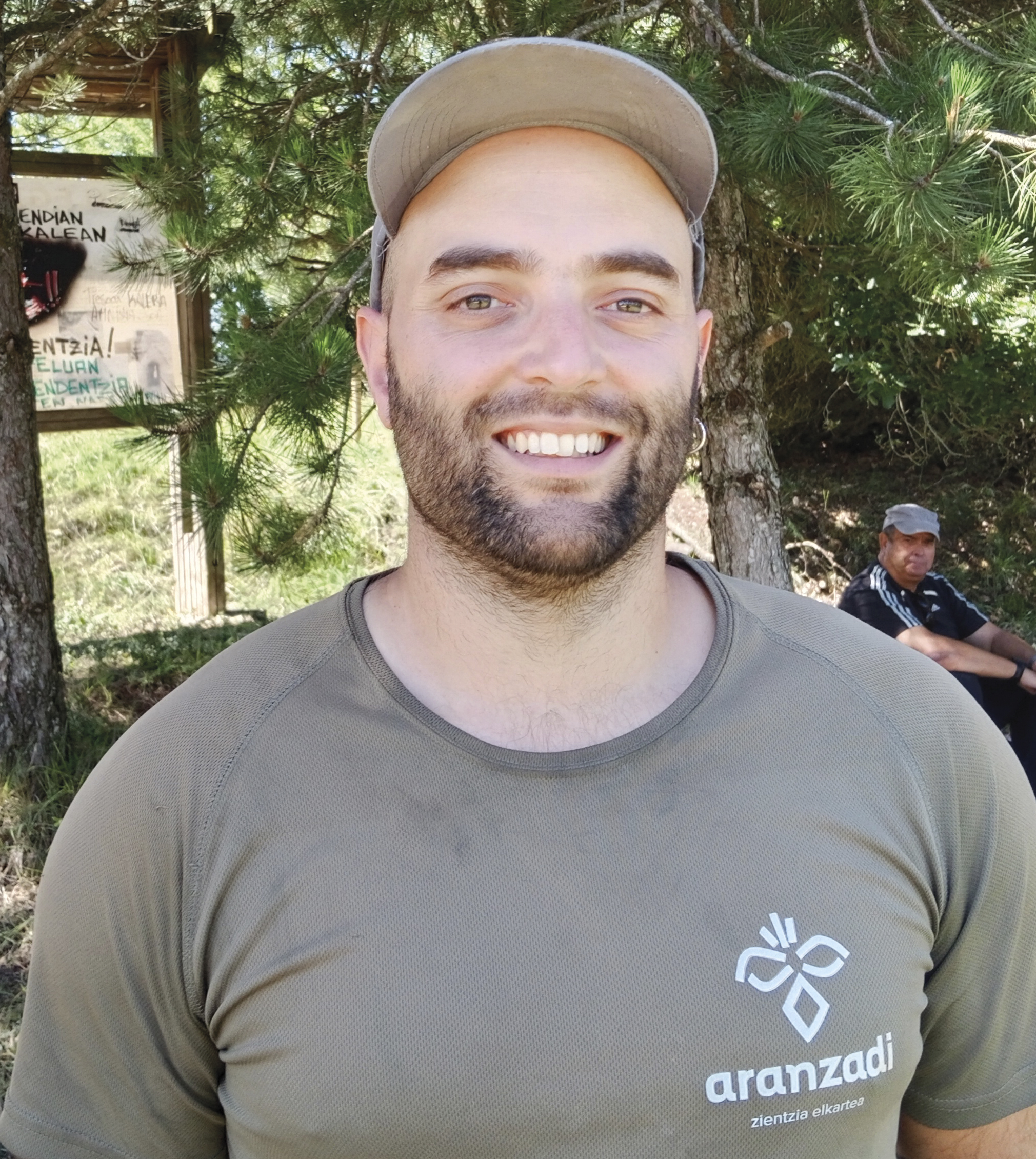“How did this language last?”
2023/09/01 Galarraga Aiestaran, Ana - Elhuyar Zientzia Iturria: Elhuyar aldizkaria
Mattin Aiestaran de la Sotilla (Tolosa, 1991), director of the excavation of Irulegi, responds in the same site to the losses, a couple of meters from the bronze hand. Also the volunteer of Aranzadi, Leire Malkorra Renobales, who started the piece, works there with other colleagues. Hand has been the central theme of Aiestaran’s responses, and there is one significant fact: it has often responded in the first person, but in the plural.

What has surprised, altered or surprised you most since you started working?
The first thing to say is that my trajectory in archaeology is not very long, fortunately there is still much to do. However, the discovery of the hand has come when we already had some work, and above all it has caught me well. The experience we don't have by age is given by the group. I have often been asked whether I am not very concerned about carrying out such a project, but after all that responsibility is shared between all the teachers, tutors, friends, colleagues... I have around me.
In addition to the discovery, it has been impressive for me to be able to work with top linguists Joakin Gorrotxategi and Javier Velaza. What happens is that the others knew nothing because it had to be kept secret, and at the same time worked with these experts. I never thought about collaborating with them, with total discretion and confidence. Most of all, when they were talking to each other, I was mouth wide, absorbing everything. Moreover, since we are not linguists, they tried to give adapted explanations, this has been a true master's in my academic and professional career.
Otherwise, archaeologically and linguistically, there has been a revolution that we didn't expect and didn't expect either. And it's that up until now the Basques believed that they had written something only in coins, but very little and badly, maybe taking some letters from the Iberian and celtibers and imitating them, but not knowing what they were writing. The hand has revolutionized all this: we have seen that the supposedly unliterate people were literate and also dominated the Iberian because they had adapted it.
What revolution or discovery would you like to witness?
Iberiera has about 2,500 writings, celtiberes about 200, vascon for now one. And it's no small thing, because so far we thought there couldn't be. The hand, although not written, is a special piece by symbolism and where it has appeared... In fact, it contains two immaterial subjects that are very difficult to investigate from archeology. Precisely we, in archaeology, work with material vestiges and have quite a few strengths on architecture, crafts, diet, lifestyle... But political organization, religion, language -- that's all immaterial.
However, I would like to know more. Deciphering is very difficult and, of course, we would all like to see more written and clarified. But seeing that the Iberian has some 2,500 writings, and that in today’s Italy there are also fragmentary languages, some with 11,000 samples, which are not able to decipher... We only have one, and we haven't compared to what. We can compare it to the names of gods and people that appear two centuries later between Latin; then XV. With those old 20th century texts -- but thousands of years have passed there. The Iberian, then the Latin, the Germanic languages, the Arabic, today is affecting English…
And that's the question. How has this language been maintained? Perhaps the written language in the hand is later than that, or the language of the writings later found in Aquitaine; it is not known. But it has lasted. And instead, others who were stronger were not. Why is that? What is the explanation? That is what I would like to know: Why has the Basque country lasted until today?

Gai honi buruzko eduki gehiago
Elhuyarrek garatutako teknologia




